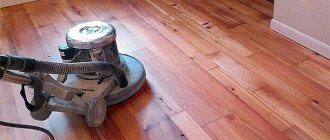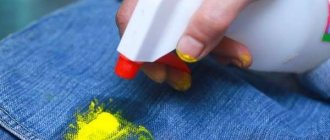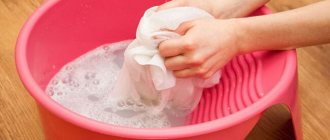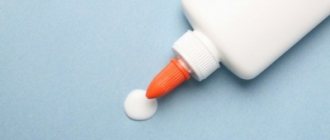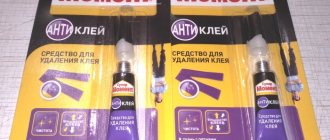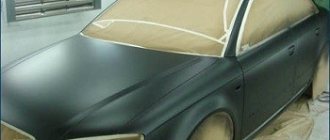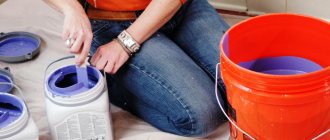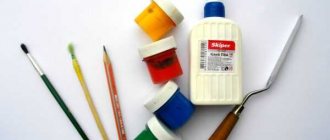Things to consider
- If the item is expensive and you are afraid to take risks, it is better to immediately take it to the dry cleaner.
- If you want to clean the dirt yourself, don’t delay it. Try to scrub off the paint within the next few hours after the stain appears.
- If the paint has had time to dry thoroughly, first very carefully scrape off the top layer with a blade. This will make it easier to wash it off. But if the fabric is quite delicate, it is better not to use a blade, otherwise you may accidentally tear it.
- All the methods below are working. They have been tested by real people who have shared their experiences on various forums. But very often it is not clear what kind of paint left the mark. Therefore, if the product does not help, perhaps it is simply not suitable for the substance in which your item is stained.
- If the stain is large, you can try several products on it at once in different areas. This way you will know which method will definitely help you. If the stain is small and the chosen product cannot cope with it, just try another one, lightly rinsing off the previous one with water.
- Also test the selected product first on an inconspicuous area of clothing. This will ensure that the color of the fabric is not affected.
- You can rub the product into a rough cloth with any brush or the back of a dishwashing sponge. For delicate stains, it is better to rub it with your hands or clean the stain with the fabric itself, as when washing.
How to deal with paint marks on clothes
There are several basic rules regarding stain removal:
- It is necessary to act quickly, since dried and old blots are much more difficult to remove than fresh ones.
- You should choose a suitable remedy. Blind use of solvent can damage the fabric and ruin the item forever. Before removing a stain, it is necessary to determine the type of material and dye.
- Before removing traces of paint from clothing with a certain product, you should test it on a small area of the fabric. If the fibers do not break, the color does not fade and the texture of the material remains the same, then the product can be safely used on the entire product.
- Stains are processed from the inside out. Household chemicals and solutions according to folk recipes should be applied to the back of the product.
- After the procedure, the clothes are washed to remove the stain. Preference is given to detergents in the form of a gel.
Important! Before processing, you must read the product label, which states the composition of the material and washing rules. You should not neglect them, so as not to spoil the thing.
How to remove coloring compounds
First, let's find out how to remove paint from clothes and what needs to be done to do this. First of all, turn the item inside out and place a paper towel under the front side. Regarding what you can use to wash stains, we use the following products:
- Laundry soap. A partially forgotten legacy of the Soviet Union. For complex stains, apply toothpaste before using soap. Only after this is it treated with soap and cleaned with a brush.
- The solvent may not be used on all types of fabrics. But at the same time, it is an effective remedy that allows you to get rid of most stains. You can use purified gasoline or white spirit.
- Nail polish remover is powerful enough to remove most dyes.
- A solution of ammonia and gasoline will help remove paint stains at home.
- Vegetable oil is used to remove fresh stains; after finishing, the item is washed to remove any remaining oil.
There are many more means to remove paint from fabric, but these are the ones used most often.
What paint is used to paint metal?
Typically, when painting metal surfaces, the following points are taken into account:
- type and grade of metal (ferrous, non-ferrous, alloys);
- what product is being painted;
- degree of paint adhesion to metal.
Acrylic paint is considered the most common type of paint for metal, since it protects the metal from corrosion one hundred percent, moreover, this paint is very durable and does not lose its properties.
Although various types of metals are also painted with alkyd paints, oil paints are sometimes used. To protect metal from corrosion, special enamels, primers, and rust paints are used. When deciding how to remove metal paint, take into account its type.
Thinner for paints and drying oils
Solvents are used for thickened and dried paint and will help remove it by liquefying it.
Depending on the type of paint, solvents are also used; there are several subtypes of coloring materials:
- paints intended for household needs, that is, needed for application to the surfaces of buildings or objects
- used for art, that is, those used to draw.
So, to transform the coloring material into a more liquid state, you can use the following types of solvent:
- turpentine;
- White Spirit;
- drying oil oxol;
- gasoline or kerosene and many others.
If you are going to clean paint from a fabric surface, linseed oil drying oil is a good choice, as it is quite easy to remove from the material.
Removing stains from fabric surfaces is a procedure that requires care to avoid damaging it. You should also determine the type of paint stain, this will help you choose the right method and means for removal.
Removing different types of paint
Before you start washing the paint, you need to distinguish the type of dye. Each variety has a special composition, which is why the methods for removing blots vary.
Water based paint
This type includes watercolor, gouache and water-based paint. Thanks to their composition, they are easily washed off, and their pigment is not as bright as that of acrylic and oil paint.
If the blot has not had time to be absorbed, then it is enough to rinse the clothes under the tap, then soak them in a basin and throw them in the washing machine.
You can use dishwashing detergent or a concentrated powder solution. Alcohol helps with old dried stains - moisten a sponge with it and clean off the dirt.
Oil based paint
Oil paint is difficult to remove, so you need to use household chemicals with a high concentration of surfactants.
First, the top layer of contamination is removed with a sharp object, but care must be taken not to tear the product. The stain is treated in a circular manner with cotton wool soaked in kerosene. You should move from the edges to the middle.
Next, the blot is soaped (ideally with laundry soap) and rinsed under the tap. After cleaning, the product should be washed in a machine or by hand.
In addition, you can use:
- Powder and butter. The ingredients are mixed and rubbed into the stain, and the item is washed in a couple of minutes.
- Vegetable oil. It is used as a solvent: applied to the blot and the residues are removed along with the paint.
- Soap and soda. A liter of water is poured into the pan, then 1 tbsp is added. l. soda and 200 g of soap shavings. The solution is boiled, then the item is lowered into the container for 10 minutes.
Advice. Since oil paint stains are difficult to remove, preventive measures should be taken. You need to drop a little shampoo into the bottle of paint - then the pigment will wash off from clothes much easier.
Acrylic
To remove acrylic paint you need to go through several steps:
- First you need to turn on cold water and place the dirt under the stream for a couple of minutes.
- Then the product is washed at 40°C for 1.5-2 hours.
- If the blot turns out to be dry, then prepare a thick slurry from washing powder and water. It is applied to the brush to make it easier to remove the stain.
- The item is washed again, but at the maximum temperature setting suitable for this type of fabric.
- For particularly difficult stains, use bleach, for example, Vanish. It is recommended to purchase a product without chlorine and other aggressive impurities.
Attention! You should choose the right household chemicals, since powders, gels and bleaches are divided according to the color of the fabric being processed, as well as the type of material.
You can look for acrylic remover in art stores. It is poured onto the dirt and the paint begins to soften. It is enough to remove the remains with a sponge and wash the damaged item.
Acrylic remover
Enamel
Before you start scrubbing paint with a solvent, you need to determine the type of fabric. It should not be used on delicate materials as there is a risk of damage to the fibers.
The main ingredient of enamel is varnish. If the fabric allows, the popular solvent White Spirit can help. You need to treat the dirt with a moistened cotton wool, and then put the item in the machine.
From delicate materials, the blot can be removed using turpentine or vegetable oil - you also need to saturate the sponge and wipe off the dye. In addition, industrial alcohol and ammonia, heated in a water bath, help. Finally, it is recommended to wash the item in salt water.
We recommend:
Shoe deodorant - how to use it correctly
What to do if the contamination is old
Even if the enamel stain has become old, you should not be upset, because effective removal methods have been invented. First you need to make the surface of the drop softer by greasing it with butter or margarine. After this, wipe with kerosene or gasoline, and then wash thoroughly. Keep in mind that gasoline for these purposes must be purified and of high quality. The use of questionable products can lead to even greater contamination.
Traces from different types of varnish, paints and enamels can be effectively removed from clothing, carpet, and furniture. The main thing is to do everything according to the rules: choose the appropriate product wisely and clean strictly from the edges to the middle to avoid the appearance of unaesthetic stains.
How to deal with dried oil paint
At first glance, it seems that there is no effective way to remove long-dried paint on jeans or a T-shirt: either the mark will remain, or the fabric will tear. But in fact there is a way, and more than one.
- First, old oil paint stains are treated with turpentine - the dried paint should soften. Now you need to prepare a strong solution of warm water and baking soda. You should soak the item in this liquid for a quarter of an hour, then the stains will be easier to remove. After this, the product is washed as usual, by hand or in a machine.
- If you don’t have turpentine in the house, you can use sunflower oil or butter, margarine will also work. Apply any of the products generously to the stain and wait until the paint becomes soft. After this, the greasy mark is wiped with kerosene, and then the item is washed with washing powder or soap.
- You can remove dried oil paint from delicate fabrics in this way: pour one or two tablespoons of white clay into a small container, add enough gasoline to make a thick paste. Apply this mixture thickly to the stains and leave until the gasoline has completely evaporated. Now you need to brush the clothes and then wash the item.
Do not forget that before using a particular substance to remove an oil paint stain, you should check the reaction of the fabric to it.
Mechanical methods for removing alkyd coating
Home remedies and factory removers are not always practical for removing any paint coatings from the surface of walls and ceilings made of mineral materials such as brick or concrete, as well as metal. In such situations, mechanical impact methods are used.
Metal brushes
A device with a pile made of wire, varying in hardness and diameter, allows you to perform a wide range of procedures for mechanical processing of products Source galacentre.ru
Metal brushes of different hardness, the pile of which is made of thin steel wire, have long been used to clean surfaces from paint and varnish coatings. Such brushes can be manual, and they are also produced for angle grinders (angle grinders) or electric drills. Of course, carrying out such work with a manual device is too long and physically difficult, so it is used exclusively for small stains or splashes. Brushes mounted on an electric drill or grinder are much more effective and are used for cleaning large areas, for example, for removing alkyd enamel from a metal frame. But for cleaning concrete or brick walls, this is not the best tool - the brushes wear out and become clogged.
Turtle disks
Such discs are a flexible circle made of an elastic base, on which diamond chips applied in segments and a strong polymer binder are located. Source stroy-podskazka.ru The
turtle disc, well known to builders, or in professional language AGShK (diamond flexible grinding wheel) is an elastic disc with diamond coating, which is fixed using a polymer adhesive. The direct purpose of the turtles is grinding mineral surfaces, such as brick, ceramic/porcelain tiles and concrete. Such a circle will be very good at removing alkyd paint, but not for long, as it will quickly become clogged, therefore, AGShK can only be used to eliminate minor contaminants (splashes, stains).
Cleaning alkyd paint with chains
Clamp the rod (bolt) in the chuck of an electric drill, as shown in the photograph, so that the chains are at least 3-4 cm away from the head Source nashaotdelka.ru
The most effective way to clean brick and concrete walls from alkyd and oil-based paint coatings can be called a homemade device made from pieces of chain, as shown in the top photo. To do this, you will need a bolt 100-150 mm long and 10-12 mm in diameter, two nuts and three or four pieces of chain with several links (depending on the thickness, so decide for yourself). Place these fragments onto the bolt under the head, and then tighten them tightly with a nut and locknut. That's it, the device is ready - all that remains is to secure it in the electric drill chuck
To remove paint, turn on the drill and bring it to the surface of the wall so that the chains can hit the layer monotonously and at high speed (they will simply break the frozen paintwork). Since the drill chuck in the normal working position rotates clockwise, to beat off the paint you should stand with your right side to the wall - this way the fallen off paint particles will fall from top to bottom. If you turn your left side to the wall, the chains will break the coating from bottom to top, and all the small fragments will fly into the air, and some of them will settle on your head and shoulders.
How to remove fresh stains?
The sooner a stain is noticed, the easier it is to remove. This is a real opportunity to keep the item in good condition, giving it its original appearance.
When we see a fresh stain, we perform the following actions:
Using a cotton pad, we remove excess paint on the surface of the item, trying not to increase the area of the “disaster”.- We apply enamel solvent, which will keep the composition moist and remove some of the coloring matter.
- We use a brush with stiff bristles, which removes any remaining dye from the fabric.
- We treat with a substance that removes the solvent (for example, ammonia solution).
- We throw the item into the washing machine, turning on the appropriate mode.
If all steps are carried out correctly, not a trace will remain of the stain.
It is necessary to completely remove the solvent, as its composition can adversely affect the parts of the washing machine.

